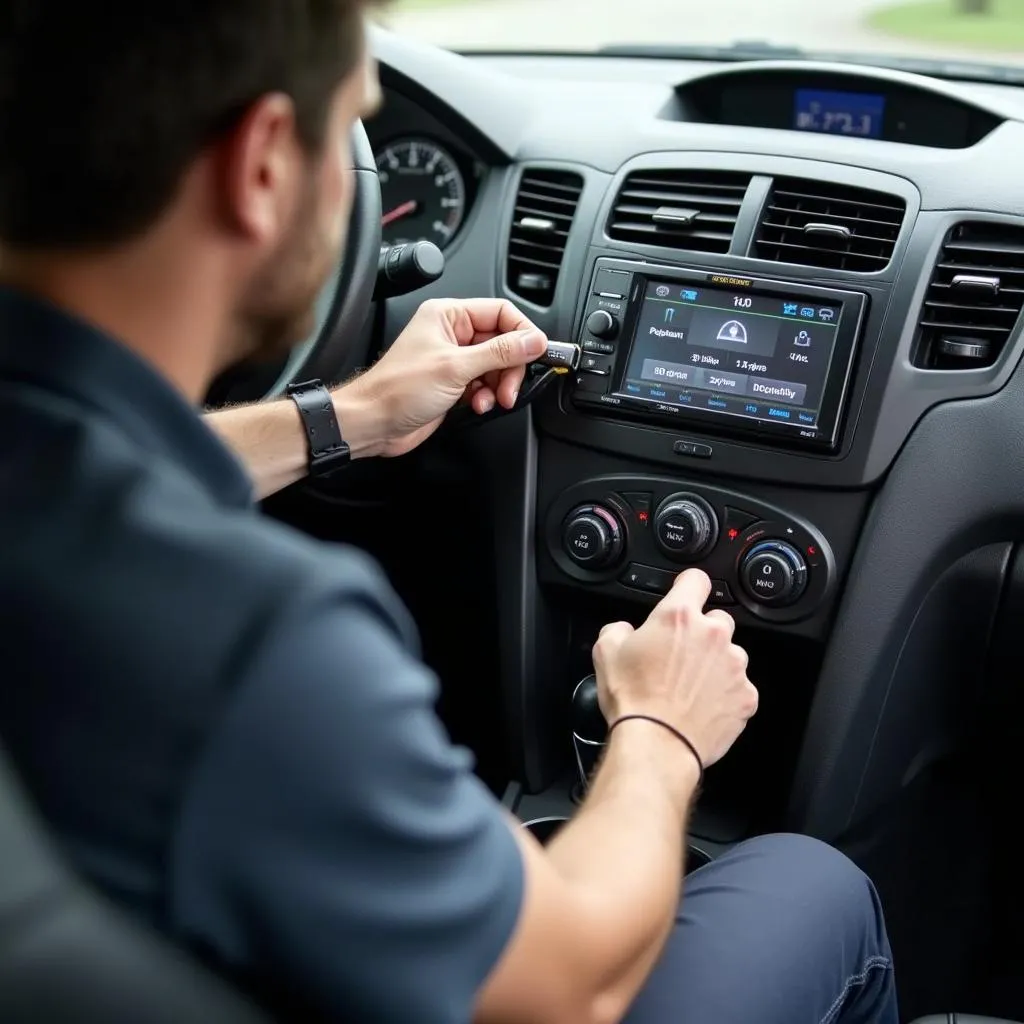The brake warning light on your dashboard is a crucial safety feature in your 1995 Dodge Ram. When illuminated, it signals a potential issue within your braking system that requires immediate attention. Ignoring this warning could lead to reduced braking performance, increasing the risk of an accident. This comprehensive guide delves into the common culprits behind the brake warning light in a 1995 Dodge Ram and provides insights into diagnosis and potential solutions.
Understanding Your Truck’s Braking System
Before diving into the specifics of the brake warning light, it’s essential to grasp the basics of your 1995 Dodge Ram’s braking system. This system comprises several key components working in harmony to ensure safe and efficient stopping power.
At its core, your truck likely features a hydraulic braking system. This system uses brake fluid, a type of hydraulic fluid, to transmit force from the brake pedal to the wheels. When you depress the brake pedal, it activates a master cylinder that pressurizes the brake fluid. This pressurized fluid then travels through brake lines to each wheel, where it acts on wheel cylinders or calipers, pushing the brake pads against the brake rotors or drums, generating the friction needed to slow down or stop the vehicle.
Common Causes of the Brake Warning Light
The brake warning light on your 1995 Dodge Ram can be triggered by several issues, ranging in complexity and severity. Here’s a breakdown of the most common culprits:
1. Low Brake Fluid Level
One of the most frequent reasons for the brake warning light to illuminate is a low brake fluid level. As brake pads wear down over time, the brake fluid level in the master cylinder naturally decreases. If the fluid level drops significantly, it can trigger the warning light.
Troubleshooting Tip: Check the brake fluid level in the master cylinder reservoir, typically located under the hood on the driver’s side. If the fluid level is below the “MIN” mark, adding brake fluid might temporarily address the issue. However, it’s crucial to determine the underlying cause of the low fluid level, such as a brake fluid leak, which requires immediate attention.
2. Worn Brake Pads
Brake pads are designed to wear down over time. As they wear thin, the brake calipers need to extend further to generate the necessary friction for braking. This extension can lead to a lower brake fluid level, triggering the warning light. If your brake pads are excessively worn, you might also experience a squealing or grinding noise when braking.
Troubleshooting Tip: Regularly inspect your brake pads for wear. If they appear thin or you notice any unusual noises when braking, it’s best to have them inspected and replaced by a qualified mechanic.
3. Faulty Brake Caliper or Wheel Cylinder
A sticking or leaking brake caliper or wheel cylinder can also cause the brake warning light to illuminate. A sticking caliper can prevent the brake pads from releasing properly, leading to constant friction and reduced braking performance. A leaking caliper or wheel cylinder will result in a loss of brake fluid, compromising the system’s hydraulic pressure.
Troubleshooting Tip: Inspect the brake calipers and wheel cylinders for signs of leaks, such as fluid around the components or on the inside of the wheels. Additionally, check for uneven wear on the brake pads, which could indicate a sticking caliper.
4. Issues with the Master Cylinder
The master cylinder is a crucial component of the braking system, responsible for pressurizing the brake fluid. A failing master cylinder might not generate sufficient pressure, leading to a soft or spongy brake pedal and potentially triggering the warning light.
Troubleshooting Tip: If you experience a soft or spongy brake pedal along with the illuminated warning light, the master cylinder could be the culprit. It’s best to have it inspected and potentially replaced by a professional.
5. Problems with the ABS System
If your 1995 Dodge Ram is equipped with an Anti-lock Braking System (ABS), issues within this system can also trigger the brake warning light. The ABS system utilizes sensors and a control module to prevent wheel lockup during hard braking. A malfunctioning sensor or issue within the ABS module can activate the warning light.
Troubleshooting Tip: If you suspect an ABS issue, it’s best to have your vehicle diagnosed by a qualified mechanic with the proper diagnostic tools to read and interpret ABS-related fault codes.
Conclusion
The brake warning light in your 1995 Dodge Ram is a critical safety indicator that should never be ignored. Addressing any underlying braking system issues promptly is crucial to ensure your safety and that of other drivers on the road. While this guide provides a starting point for understanding potential causes, seeking professional help is always recommended for accurate diagnosis and repair.
Remember, a well-maintained braking system is paramount for a safe and enjoyable driving experience.

